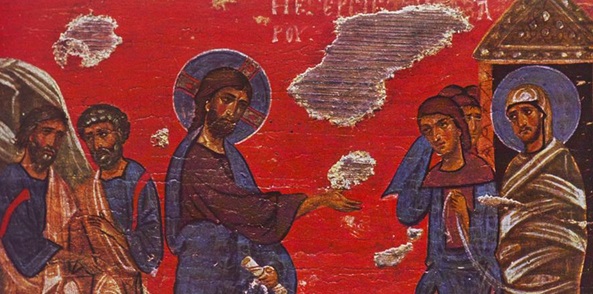
The Resurrection and the Life
What would media folk do if they could not deploy daily the sensational news of ‘ruined lives‘?
However, to spend half-an-hour wondering what an unruined life might be is to realise that it is one devoid altogether of both challenge and growth. From first to last it has gone as planned, without serious reverse, and usually from some teenage dream of wealth and celebrity to realisation of the same – well before middle age.
So, these days, the covid pandemic must have ruined many a young life conceived in those terms!
Yet, as Richard Rohr reminds us in his reflection of today, there is no real growth until we have been completely thrown off course by events we cannot control. That is what it is to ‘suffer’ – to have no choice but to put up with our own powerlessness. Until we have suffered in that way we cannot truly ‘grow up’ – to realise who it is that has always ‘had our back’!
![]()
Wounded Healers
Our Sacred Wounds
Sunday, September 13, 2020
Ministry can indeed be a witness to the living truth that the wound, which causes us to suffer now, will be revealed to us later as the place where God intimated [God’s] new creation. —Henri J. M. Nouwen (1932–1996)
Christianity, in its mature forms, keeps pushing us toward the necessary tragic: “the foolishness of the cross,” as Paul calls it (1 Corinthians 1:18). Normally, the way God pushes us is by disillusioning us with the present mode. Until the present falls apart, we will never look for something more. We will never discover what it is that really sustains us. That dreaded falling-apart experience is always suffering in some form. All of us hate suffering, yet all religions talk about it as necessary. It seems to be the price we pay for the death of the small self and the emergence of the True Self—when we finally come to terms with our true identity in God. Many Jungians describe this in psychological terms as the “necessary soul suffering” that comes from the death of the ego. Jesus would say, “Unless the grain of wheat dies, it remains just a grain of wheat” (John 12:24). By avoiding this legitimate pain of being human, we sadly bring on ourselves much longer lasting and, often, fruitless pain.
In the work I have done with men’s spirituality, we call that suffering in its transformed state “the sacred wound.” The sacred wound is a concept drawn from classical mythology, but also from the Christ story. In mythology, the would-be hero is always wounded. The word innocent (innocens, “not yet wounded”) is not a complimentary term in mythology. The puer is the young boy (puella for the young girl) who refuses to be wounded. More precisely, he refuses to recognize and suffer the wounds that are already there. He’s just going to remain nice and normal so everybody will accept him. In our culture, he might smugly remain white and middle class, healthy, “sinless,” Catholic, good-looking, and happy. Maybe he will drive a fancy car or wear the latest clothing. He refuses to let things fall apart. He refuses to be wounded, much less to allow the humiliating wound to become sacred and sanctifying. Yet, I personally believe that the Gospels are saying there is no other way to know something essential. Allowing our always-unjust wounds to, in fact, become sacred wounds is the unique Christian name for salvation. We always learn our mystery at the price of our innocence.
We must trust the pain and not get rid of it until we have learned its lessons. The suffering can be seen as a part of the great pattern of how God is transforming all things. If there is one consistent and clear revelation in the Bible, it is that the God of Israel is the one who turns death into life (see Isaiah 26:19; Romans 4:17; 2 Corinthians 1:9). When we can trust the transformative pattern, and that God is in the suffering, our wounds become sacred wounds. The actual and ordinary life journey becomes itself the godly journey. We trust God to be in all things, even in sin and suffering.
Adapted from Richard Rohr, The Wisdom Pattern: Order, Disorder, Reorder (Franciscan Media: 2020), 67‒68.
Epigraph: Nouwen, The Wounded Healer: Ministry in Contemporary Society, 2nd ed. (Image Doubleday: 2010, ©1972), 96.
Image credit: Resurrection of Lazarus (detail), circa 12th‒13th century, Athens.
You can sign up for Richard Rohr’s daily emails at: the Centre for Action and Contemplation, Albuquerque, New Mexico.

0 Comments